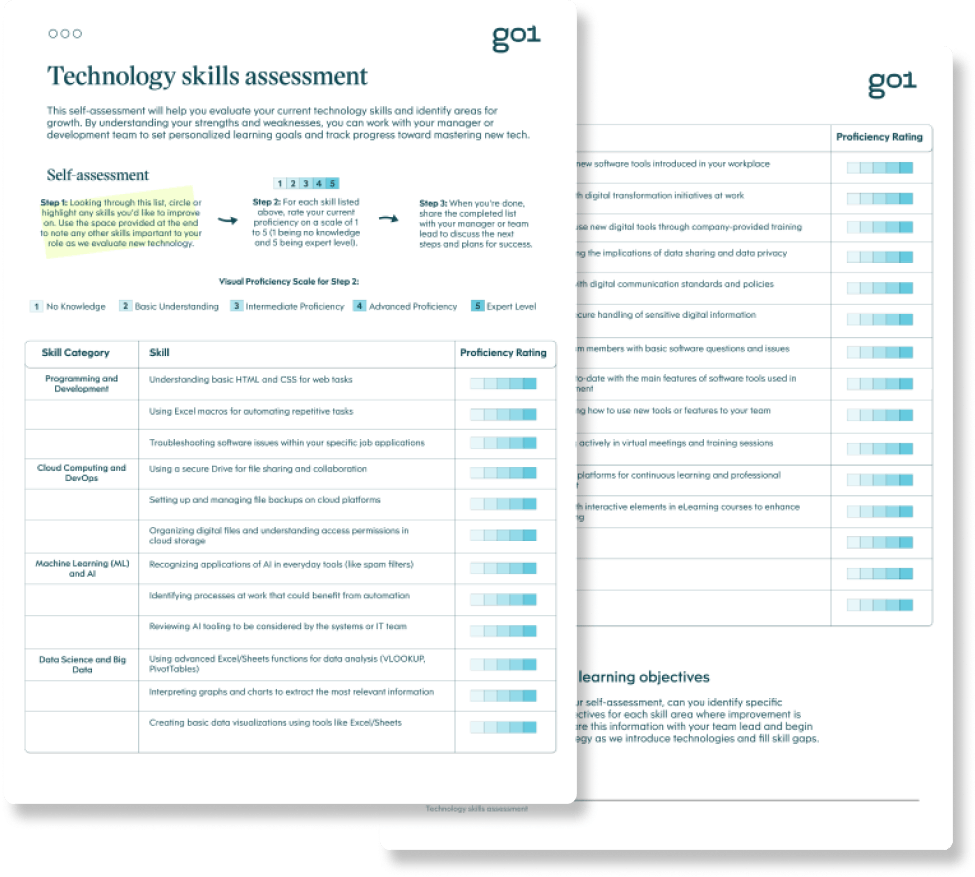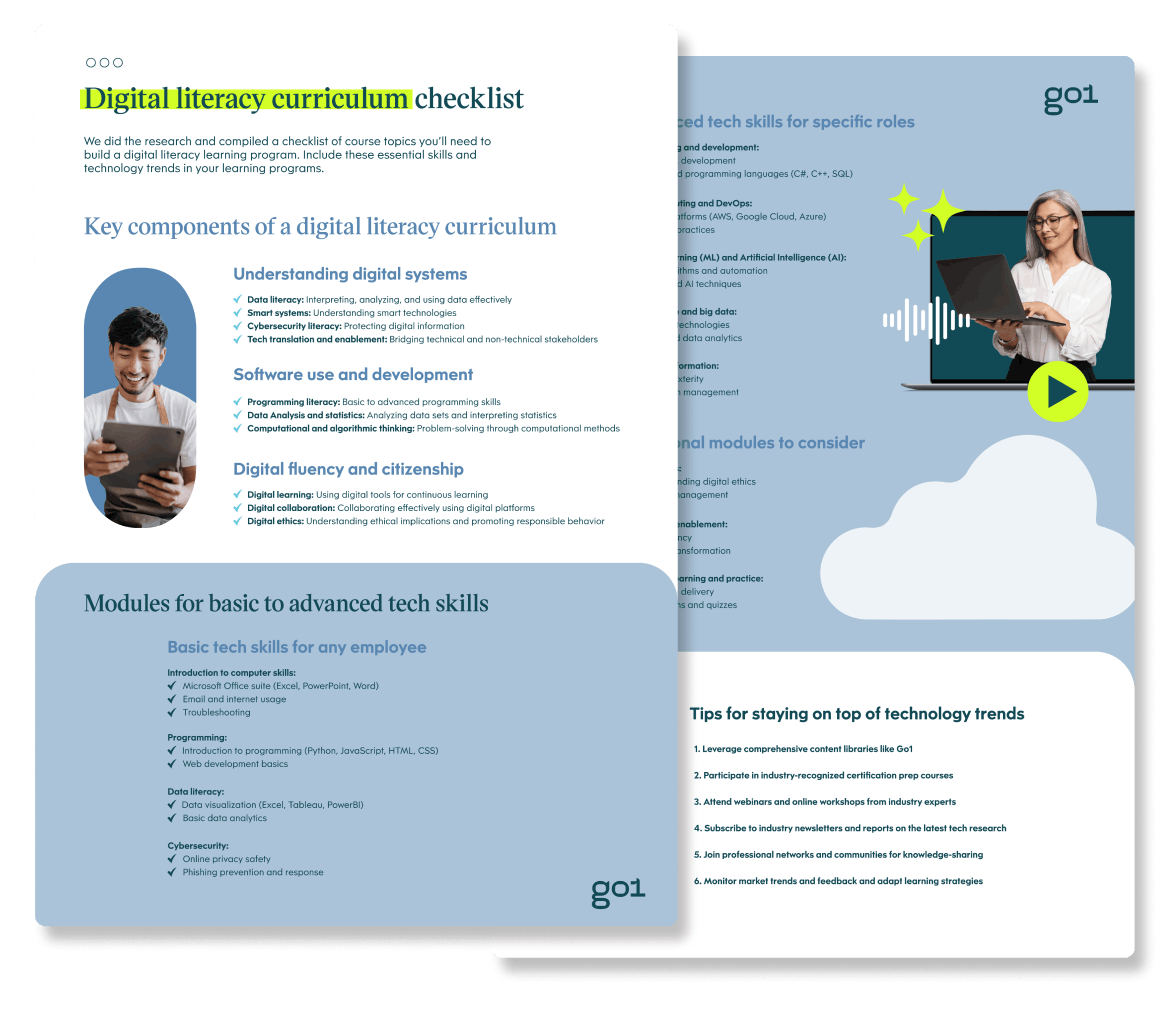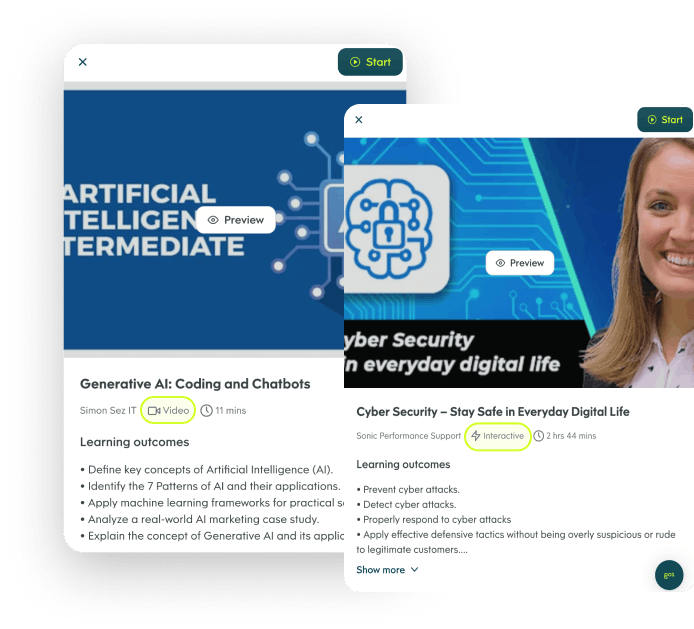
Digital literacy isn’t just another skill—it's essential
We know that 92% of jobs today require digital skills. But many organizations still aren’t making digital literacy a priority.
And that’s the problem. Because digital literacy isn’t just about knowing how to use a computer—it’s about working smarter, collaborating better, and staying secure in an online world.
Here's what that looks like in practice.
Why digital literacy matters
When employees have strong digital skills, they:
- Work faster, with fewer errors. Knowing how to automate tasks, use shortcuts, and navigate digital tools efficiently saves time and frustration.
- Communicate and collaborate seamlessly. Whether remote or in-office, teams rely on Slack, Teams, Google Workspace, and other digital tools to stay connected.
- Solve problems independently. Tech-savvy employees don’t let minor IT issues slow them down—they troubleshoot and keep moving.
- Protect your business from security threats. Phishing scams and weak passwords are some of the biggest risks companies face. Basic cybersecurity awareness makes a huge difference.
- Adapt to new technology with ease. Markets change and software updates. Digital literacy ensures teams can keep up with the latest skills.
What skills do employees need?
The key skills employees need to build digital literacy are:
- Data handling: Data visualization, statistical analysis, and effectively using spreadsheets are seen as mandatory across most industries.
- Communication: Virtual etiquette, document collaboration, project management, and asynchronous communication tools are present in almost every business today.
- Security: Phishing attempts and password breaches are some of the top threats to businesses. Basic security practices, such as recognizing these attempts and handling passwords safely, are essential.
If your employees struggle with any of these, it’s time to build a stronger digital literacy program.
How to build a digital literacy program (without overcomplicating it)
1. Assess what your team needs
Start with a quick skills audit. What’s holding your team back? Where do they need support? A simple self-assessment or survey can highlight gaps and priorities.
Set clear, measurable goals like:
- 90% of employees completing a digital tools training in six months.
- Reducing phishing-related security incidents by 60% after cybersecurity training.
2. Create a digital literacy checklist
Instead of overwhelming employees with random courses, focus on key areas:
- Essential digital skills: Email automations, spreadsheet formulas, cloud storage, and virtual communication.
- Advanced tools: CRM systems, project management tools, or analytics.
- Security and privacy: Data protection, cybersecurity best practices, and handling sensitive information.
Need a shortcut? Start with our digital literacy curriculum checklist to get you started.
3. Use the right tools without adding admin
You don’t need to manually source dozens of courses. A content aggregator like Go1 gives your team access to expert-led training across digital skills, cybersecurity, and certification prep—all in one subscription.
With Go1, employees get:
✔ Bite-sized modules for better retention.
✔ Blended learning options for flexibility.
✔ Real-world scenarios to make training stick.
Make digital literacy easy with Go1
Building a digitally literate team doesn’t have to be complicated. With the right tools and training, your employees can work smarter, stay secure, and adapt to whatever comes next.
With Go1, you don’t need to overcomplicate it. It's easy to integrate, accessible anytime, and designed to make digital learning a simple part of everyday work.
Ready to get started? Book a demo and see how Go1 can help your team become digitally literate, without the hassle.







